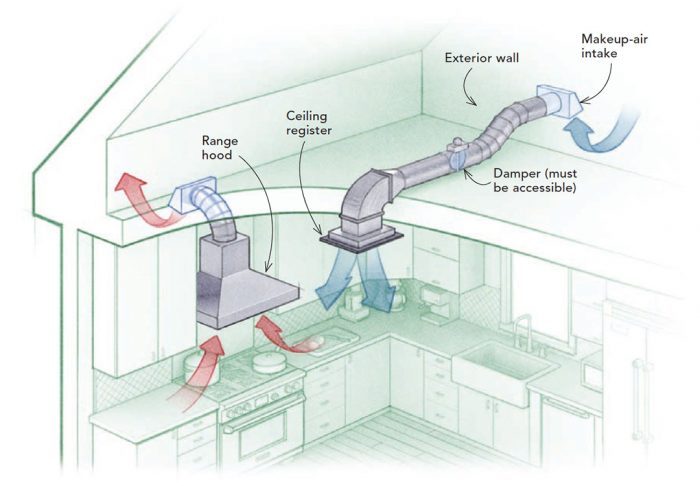
Building codes are chock full of instances in which requirements for a certain assembly or feature are laid out in great detail, but the thing itself isn’t actually required. It’s usually not explicitly stated that the feature isn’t mandatory, just noted that it has to be done a certain way when it’s included. Not surprisingly, this approach leads to occasional misunderstandings—some widespread.
A great example of this is the domestic kitchen range exhaust, more commonly known as a range hood. While some believe differently, there has never been a model code requirement to provide a kitchen range exhaust in any American dwelling. There are, however, plenty of code requirements that address kitchen exhaust when it’s installed—so many requirements, in fact, that I’m going to focus on just one: makeup air.
Makeup air has gotten some attention in recent editions of the International Residential Code (IRC), but interestingly, the provisions about kitchen exhaust are pretty similar to the 1971 Council of American Building Officials (CABO) code where they first appeared. Code writers back then realized that mechanically exhausting air from a kitchen could compete with the natural venting of fuel-burning appliances. An exhaust fan that depressurizes a building can cause conventional fuel-burning appliances to backdraft into the house, filling it with harmful gases. This concern hasn’t changed, as these code snippets indicate:
1971 CABO, M-1210—Exhaust and ventilation systems: Air requirements for the operation of exhaust fans, kitchen ventilation systems, clothes dryers and fireplaces shall be considered in determining the adequacy of a space to provide combustion air requirements.
2018 IRC, G2407.5—Makeup air provisions: “Where exhaust fans, clothes dryers and kitchen ventilation systems interfere with the operation of appliances, makeup air shall be provided.”
But these excerpts still don’t provide any insight into when makeup air is required and how to provide it.
Because kitchen makeup air is related to kitchen exhaust air, it’s appropriate to address kitchen exhaust and how it relates to the misunderstanding that opened this article. Chapter 3 of the International Residential code, “Building Planning,” contains the majority of the code’s “you shall provide this” requirements, and there are none in there—or anywhere else in the IRC—that say you must have a kitchen exhaust, and there never have been. (This isn’t to say there aren’t jurisdictions that require range hoods; states and municipalities can and do tack things like that onto the model code.)
This holds true even for gas ranges, which confuses many people. Why does a 40,000-Btu-per-hr. gas-fired water heater require venting, but a 60,000-Btu-per-hr. range doesn’t? After all, both can produce carbon monoxide. The reason they’re treated differently is because the occupant controls and thus should be aware of when the range is in use; a water heater operates automatically and without the occupants’ involvement. A failing water heater could poison you while you sleep, but if toxic gases begin to overwhelm you while you’re boiling noodles, you have a good chance of recognizing what’s happening and stopping it. The requirements for carbon monoxide alarms only in proximity to bedrooms reinforce the nature of the concern: fuel that burns while you sleep.
Other notable makeup-air provisionsThere are other, less controversial provisions related to makeup air that are also worth looking at. Here’s just a summary; to see them in their entirety, read them for free at iccsafe.org R303.5.1—Intake openings: A 10-ft. separation is required between the inlet of the makeup-air duct and any noxious contaminants, such as vents, chimneys, plumbing vents, streets, alleys, parking lots, and loading docks. Interestingly, exhaust from toilet rooms, bathrooms, and kitchens is not considered hazardous or noxious, and the IRC explicitly allows makeup-air intakes to be located near these vents (in other words, your kitchen makeup-air intake can be right next to your kitchen exhaust-vent termination). R303.6—Outside opening protection: Both exhaust and intake openings that terminate outdoors have to be protected by corrosion-resistant louvers, screens, or grilles. The openings in these covers can’t be less than 1/4 in. or bigger than 1/2 in. in any dimension, and must be protected from the weather. M1503.6.2—Makeup air dampers: Makeup-air systems require dampers that automatically open when the exhaust system is in use. |
With this understood, let’s look at the requirements related to exhaust—which, again, only apply once the choice to install it has been made. Early in Section M1503 of the 2018 IRC, “Domestic cooking Exhaust Equipment,” the text reads, “Where domestic cooking exhaust equipment is provided…,” reminding us that installation of this equipment is not required; rather, if it is installed, these are the requirements.
There are many provisions in this section that I’d recommend reading as a follow-up to this article, but I’m going to jump to the part about makeup air. These guidelines were added to the 2009 IRC, to the dismay of many homeowners. They require that all kitchen exhaust hood systems capable of exhausting more than 400 cu. ft. per minute (cfm) be provided makeup air at a rate approximately equal to exhaust. This air has to either be discharged into the same room as the range hood, “or into rooms or duct systems that communicate through one or more permanent openings with the room” where the range hood is installed.
There was no mention of why this was required. Homeowners who dreamed of a large overhead exhaust in their kitchen remodels weren’t happy with the added expense and additional breach of their thermal envelope, especially since the reason for it wasn’t explained. Nonetheless, the requirement held through the 2012 and 2015 editions; only new requirements for dampers were added.
Then, in the 2018 IRC, the makeup-air provisions were tweaked. The hazard first spelled out in 1971—the presence of fuel-fired appliances inside the home—reemerged. The requirement to provide makeup air is now tied to the actual danger. But while the risk identified all those years ago hasn’t changed, the available appliances have. Appliances that draft naturally are still around, but are incredibly inefficient because they use heat generated by the appliance as the mechanism to carry the combustion products to the atmosphere. If you have one of these appliances—be it a furnace, a boiler, a water heater, or something else—and a range hood capable of exhausting more than 400 cfm, you need makeup air.
But with greater attention to energy conservation, direct-vent and mechanical-exhaust appliances are increasingly common in homes. Direct-vent appliances pull their own combustion air from the exterior through a dedicated pipe and have a closed combustion chamber; they do not communicate with the air in the home and aren’t affected by the depressurizing effects of a ripping kitchen exhaust. A mechanical venting system may share the same air as the rest of the house, but it has a fan and can fight back against the range hood to force the exhaust out of the house. As long as fuel- burning appliances inside a home’s thermal envelope are either direct-vent or mechanically exhausted, a kitchen exhaust can be any size and no makeup air is required.
Not all new code provisions are more restrictive than previous versions. Some are meant to correct the over-steering of past editions that sent us fishtailing down the road. For now, the IRC seems to have it right—changes to the mechanical chapters of the 2021 IRC were completed in 2018, and no modifications were made to the requirements for makeup air.
_________________________________________________________________________
Glenn Mathewson is a consultant and educator with buildingcodecollege.com. He is a regular contributor to Fine Homebuilding magazine.
Weekly Newsletter
Get building science and energy efficiency advice, plus special offers, in your inbox.





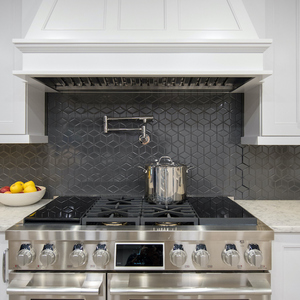
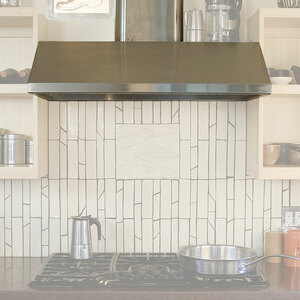
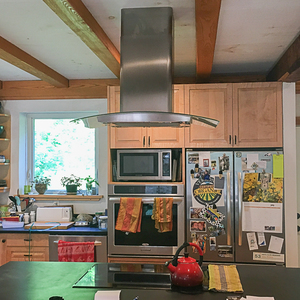
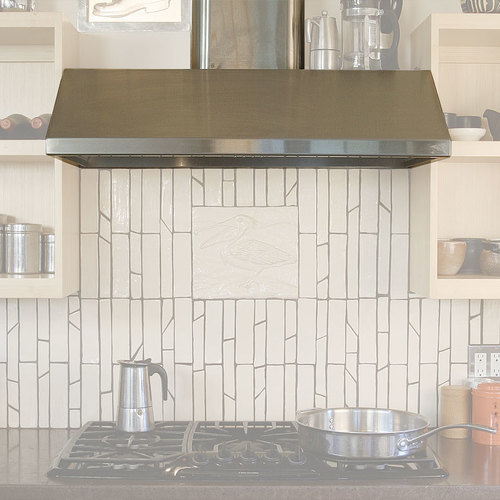






36 Comments
This is important information for more reasons than range hoods. With more and more direct vent furnaces being installed, standard water heaters are sometimes left as the only appliance on the gas flue. Many older homes have no provision for makeup air and got by because of high infiltration rates and typical stack effect principles. As we move towards energy improvements (tighter building envelopes), replacing the 3" bath fans with higher CFM 4" fans the orphaned water heater in the basement must be considered for safety.
Hi Doug,
I agree and I think it is particularly important because replacing bath fans and upgrading kitchen exhaust are often DIY/handyman projects and as the article says, you don't need makeup air until you do. When you do, it's a serious issue.
So what does this mean if local code is 2015 IRC?
Currently building a house, only combustion appliance is a wood stove with outside air kit. Have only been looking at 390-400CFM range hoods because I don't want to add makeup air.
Can I make the argument that because it's allowed under 2018 IRC I should allowed to install a 600CFM vent hood? Does the zehnder ERV mean I won't depressurize the house?
You can make all the arguments you want, it completely depends on your local building official.
An ERV provides balanced ventilation. It supplies as much as it exhausts. It is completely disconnected from the range hood and cannot balance the range hood. For one thing, that would mean the ERV would have to supply 600 cfm. ERV's operate in the 100 cfm range. Two, it would have to be able to shut off the exhaust side of the ERV whenever the range hood runs. Controls do not allow this. Third, the makeup air needs to be mostly delivered to the kitchen. ERVs deliver air throughout the entire house.
This is exactly my issue I'm looking to tackle.
I have often wondered if air-gapped double-wall duct of sufficient diameter could be used to supply makeup air that is naturally heat-exchanged across the length of the galvanized duct and thus somewhat conditioned by the outgoing exhaust air. The duct connections might be a bit tricky but being able to construct a single run to the kitchen that provided both exhaust and makeup air could be advantageous. (Handling of condensation might also have to be provided for.)
I've also wondered when the makeup air can feasibly be introduced by a natural draft if the static pressure of the makeup ducting was low enough, and when an actual makeup supply fan was required. I have seen both kinds of systems proposed.
At a commercial level, here is an example of exhaust air to hot water preheat: https://www.youtube.com/watch?v=x5HyR1Nrc6E
You wouldn't want the heat exchange to the makeup air during the summer.
I wish range manufactures would incorporate makeup air in an updraft configuration to improve capture efficiency. Something like a wide, thin supply against the back wall, washing air up would be interesting.
Edit: I also want a standard high output burner in the central location for the best capture efficiency.
I had assumed that if a passive makeup air supply was sufficient that it could be implemented in the summertime by simply opening adjacent windows.
I had also been attracted to the idea of providing makeup air at the back wall behind the range, but it turns out this location is prone to short-circuiting if the makeup air plenum does not have a very large cross section and is located well below the cooking surface. See the attached 2004 paper for some graphic Schlieren visualizations of the airflow and recommendations for best practices in commercial environments based on different locations of the makeup air supply.
Also another version of this paper can be found at: https://fishnick.com/publications/ventilation/makeup_air.pdf
Hi all,
If we want to bypass the HVAC system altogether and create a makeup vent directly into the kitchen like your illustration above, does it make a difference where the makeup air register is located? This particular builder installed the makeup air right into the hood (https://www.youtube.com/watch?v=u2uVaTMXd_8), which seems great but very costly. The makeup air ceiling register illustrated above seems more cost effective, but does it provide sufficient makeup air to replace the displaced air from the hood? We're looking to remodel our kitchen, and local building code requires us to provide makeup air for hoods that are 400 cfm or above. I've spoken to several contractors in town, and they all suggest attaching the makeup vent to the return air duct connected to the HVAC system, but I'm concerned about whether this will ultimately damage our HVAC unit.
I'm in this same situation. What did you end up doing?
I'm building a new home with induction range (no gas appliances except for forced-air furnace and a direct-vent fireplace). We have selected for the induction range a 395 cfm wall chimney, vented to the outside,. Local code does not require make-up air, with the configuration as described. My question is, if I installed a makeup air system anyway, would it improve the long-term performance of the thermal envelope and/or HVAC system? Would the improvement be significant over time enough to justify the expense? Thank you in advance.
This is a really fuzzy area to decide what to do. I have vacillated from a pro gas range with full conditioned make up air to an induction cooktop with no make up air. I will need to make a final decision in the next two weeks when the HVAC design gets done.
Our local code is flexible yet leaves room for individual inspector interpretation:
In ventilating systems that exhaust air to the outdoors, provision shall be made for the admission of a supply of make-up air in sufficient quantity so that the operation of the exhaust system and other exhaust equipment or combustion equipment is not adversely affected. It goes on to specify that the make up air system needs to interlocked with the exhaust system and the air requires tempering.
I think that if you try out an induction range you will find that it is everything you hoped for in a pro gas range as far as cooking performance, as well avoiding the air quality impacts of combustion indoors.
I agree with Charlie's viewpoint - induction cooking is powerful and more responsive to controls as compared to gas. Problem is, as a culture we're attracted to flame, and, the on/off of the flame gives the illusion of instant control (ignoring the heat that is retained in the grate). Cooking with gas has been heavily marketed for decades. A good solution to the overall problem described in this article: keep fossil fuels out of the house, and, as much as I hate to say it (I live in rural Maine), don't burn wood in a well-sealed and well-insulated house. The predictions that, in the long run, natural gas prices will rise faster than electric are part of this picture; as is the recent study from Stanford regarding the health impacts of burning fossil fuels to cook, heat DHW, and domestic heat.
Yeah, we decided on induction cooktop. I wish they were better represented in the offerings in appliance stores. They are flush with pro gas appliances with relatively few choices in induction.
Hi Glen:
thanks for addressing this important issue. We should be avoiding GHG emissions, and avoiding exposures to combustion pollutants in our homes, especially if children are at home, and especially during power outages when deadly CO poisoning from gas stoves tends to increase.
re: makeup air: I noticed that your diagram shows a supply duct near the stove & sink area. The draft from this layout could create major Thermal Comfort problems for nearby occupants, esp. during cold weather.
Recommended best practice solutions, such relocating and splitting the makeup supply registers, and other range hood issues are covered in our ROCIS.org Kitchen Range Hood Guide and presentations at https://rocis.org/kitchen-range-hoods.
The most recent presentation with updates, including the new CA building energy standards for ventilating gas & electric stoves, is from the EEBA Sept. 2021 meeting: https://www.dropbox.com/s/ydbeo7js2flmg3a/9-15%20Keep%20A%20Lid%20On%20It%2C%20EEBA%202021.pdf?dl=0/
Salud,
Tom
“[Deleted]”
Tom,
Thanks for the useful link.
With a passive air-supply duct close to the stove as Glen shows, wouldn't you have even greater negative pressure near the range hood and less drafts? Your recommendation to split the supply ducts seems to me to only make sense of you had mechanically powered supply air. But I'm probably missing something.
Hi Malcolm:
good question.
re: passive makeup air and less draft: maybe, would need to measure. Thermal comfort would depend on air speed, T, RH, clothing, age, gender, etc.. Pressure at range hood would depend on MA duct size and other air pressure factors at the time (outdoor & indoor T, wind, other exhaust fans, etc.).
re: split ducts and mechanical MA supply: MAYBE (edited 2/27/22).
We recommend "automatic (interlocked) motorized damper or a fan-powered system/" AND measuring duct pressures, to verify low risk of depressurization (Supplement 3). "... gravimetric or barometric dampers are not allowed for use in make-up air systems, according to ASHRAE 62.2-2016. .."
I think most reputable mfrs recommend mechanical MA too, but these MA requriements are not well enforced by building inspectors. And there area lot of DIY installations that are all over the map.
The optimum solution is to avoid a high flow hood. Instead, select a very good hood (quiet; high capture efficiency), and install between cabinets on a wall, and cook mostly on back burners and at lower temperatures ! However, in a super tight home, even a low flow hood could cause some depressurization problems, which could be a problem in hi Rn areas.
Tom,
" The optimum solution is to avoid a high flow hood. Instead, select a very good hood (quiet; high capture efficiency), and install between cabinets on a wall, and cook mostly on back burners and at lower temperatures! "
Agreed!
One large venting situation I encountered was when an evaporative cooler was replaced with A/C.
An attic fan was installed in the ceiling (where the evaporative cooling used to come into the home), so that on cool evenings the hot air at the top of the house and in the attic could be vented quickly. This resulted in substantial venting outside while that fan was on.
If the windows were closed, when the attic fan was turned in on, the backdraft through the water heater (located in the basement) was strong enough to blow out the pilot light. No problem when windows were opened, but that doesn't always happen.
What if you have an all electric home and no fireplace? And don't live in NJ??
We live in an all-electric condo in NJ. While I would love to put in a high flow hood, and can find ones that claim 900cfm for a similar price as a 375 or 400 unit, NJ building code M1503.4 says any hood in excess of 400cfm has to have makeup air. That's the NJ way. We have to have CO alarms too, even though nothing in the house can give off carbon monoxide. No gas appliances. No fireplace. Doesn't matter. Thou shalt not question the code.
I forgot to mention a possible problem down the line: when climate change makes your climate like that of the SE region by mid century or so (hot & humid summers), excess depressurization during AC operation could condense moisture inside your walls. Then you have a mold factory.
Drew,
You can console yourself that even in the absence of combustion appliances, make-up air is a good idea whenever you have an fan powerful enough to unbalance your ventilation to the extent that a high CFM kitchen exhaust would.
Drew:
I concur re: need for make up air with high flow hoods, plus measuring depressurization to make sure the system works, and getting a hood that is acutally effective at removing cooking emissions (see best practice guide & slides, google ROCIS range hood.
re: 900 cfm range hood: sounds like overkill, plus you would probalby need to wear noise cancelling headphones while you use it, unless you like the sound of a jet engine in the morning! ;=]
that fan could be sucking air in a lot of air that you don't know where it's been -- sewer gas, radon in the soil, toxic VOCs in the soil, solvents, smoke, etc. from an adjacent condo, parking area or chemical storage area. Of course, it depends -- on how tight your house is, how windy etc.
Why do you need a 900 cfm hood?
This has come up a few times with our clients. We can talk them into ASHP heating/cooling, a heat pump water heater and no fireplace in our tight-ish (+/- 1.5-2.0 ACH(50)) single family homes. But some clients we absolutely cannot talk out of a gas cooking appliance with a big 'ol range hood. As mentioned in the article, 2018 IRC calls for MUA if the house contains a combustion appliance and a hood >400 cfm. This is so that combustion appliances don't backdraft, which is an excellent reason. My question is IF the only combustion appliance is the range itself, why is MUA needed? There is no flue on this appliance to backdraft, and in fact, the higher the range hood CFM, the LESS likely that combustion gasses will remain in the house. Sure, without makeup air you might have some doors that slam shut, and your ears might pop a bit from the pressure change, but there is no real danger here, is there? As also mentioned in the article, the IRC does not require a range hood, so theoretically, I could do a gas range without a hood (or with a recirculation hood) in that same house. This scenario seems much worse.
Unless I’m missing something, are the automatic MUA damper kits that Broan offers not a viable option?
https://www.broan-nutone.com/en-ca/accessory/md8tu
I’ll admit, I am just starting to wrap my head around MUA and have not seen it installed in any residential projects in our market. These kits look like a simple and affordable solution, albeit without any sort of pre heating option on the supply side like the Fantech system. Anyone have experience with these systems?
FYI: Healthy Cooking Tips for the Holidays and Year Round: updates and new info from ROCIS.org.
Below are some timely IEQ treats for the holidays. Please share this with friends, family, colleagues, et al.
— ROCIS Range Hood website: recently updated, improved website. Includes more resources on induction stoves. It is much easier to navigate now. https://rocis.org/kitchen-range-hoods/,
— Youtube of my Dec. 2020 comprehensive webinar (48 min.):
Keep A Lid On It: Best Practices For Reducing Cooking Pollution In Homes,
Slides are also posted at Resources/Presentations page.
— Youtube of overview presentation and info on induction stove cooking, by Linda Wigington and Rob Busher from ROCIS Team (25 min.):
Reducing Exposure to Cooking-Related Emissions: An Overview.
https://www.youtube.com/watch?v=xvwtOruXALA
— Makeup air tip: Home video on how to “channel the flow” of oven & stove top emissions to your exhaust hood:
When we are roasting, baking, grilling, etc. on our peninsula stove installation (no back wall), we don’t have side extensions yet, so we
1) prop 2 or 3 big baking sheets behind the oven vent and
2) crack the nearby window open a bit for make-up air.
Notice the smoke plume being deflected to stay under the hood.
https://photos.app.goo.gl/LtrCfu2KGjC5oZ9P6
Happy Holidays,
Tom
correction: here is the pasted in link for my 2020 webinar
https://www.youtube.com/watch?v=xvwtOruXALA
and the overview webinar, https://www.youtube.com/watch?v=D2aYda6SWk
They are also on the ROCIS website.
yolotom,
Thanks for the links! Unfortunately the second one has been taken down.
Hi Malcolm: looks like a URL pasting typo for the Overview webinar. This should work:
https://www.youtube.com/watch?v=D2aYda6SWkI
Cheers!
This whole area of code is such a mess. IRC is one thing but there's still the mechanical code. My mechanical inspector didn't even know most of the codes, and he'd never heard of a very tight passive house. However he said I HAD to have a hood, and he would not allow me to exhaust even an induction cooktop to the outside near a window. I have windows on both sides of my cooktop, so I had no choice but to put in a recirc hood (for now.) Somehow in his mind it is better to recirc through a crappy carbon filter back into the kitchen than to exhaust outside next to a window which may be open 2% of the time and can easily be closed during cooking? Kooky. So I got a recirc fan which can be converted, and will work out the MAU at that time. I won't be running above 400 cfm but with such a tight house is still may be a problem.
I was hoping there would be more choices in MUA available over time, especially ones that have pre-heaters. But instead availability seems to be getting worse.
I agree the whole thing is a mess. My issue at the moment is whether I passively dedicate a fresh air duct directly into my kitchen or do what my mechanical contractor is suggesting which is two 4" ducts integrated into the existing HVAC system.
What happens if you put it in your existing HVAC and you're not running your HVAC? That happened to friends of mine. Different situation but when Covid started they said "we paid for a great filter on our HVAC so we're good" and I said "what about all summer when you don't run the HVAC?" Oops, they had to make some changes so it could run at low speed without putting too much pressure on the fan.
So the point is, would you get MUA if the HVAC wasn't running?
My house had many delays so we just moved in. Our house is super tight and so far we just have a recirc hood which we haven't even used yet (cooktop isn't quite hooked up.) Our plan is to use that plus the Zehnder until we get around to exhausting it to the outside, and address makeup air at that time. It's only a 400 or 500 cfm fan, for an induction cooktop. We haven't noticed any pressure differentials yet like we expected, for example with the dryer. So we bought a manometer to start measuring pressures to at least see what's happening when we run the dryer, and how the crawl is comparing to the rest of the house.
You indicate that a 60k btu range doesn't require ventilation, because it's user operated vs. automatic operation such as a water heater.
Why then does a high CFM fan, which is user operated, require make up venting?
The logic in the code is inconsistent. If high btu user operated appliances require no ventilation because they are user operated, then the risk of a lower but ventilated appliance potentially and occasionally venting into the home due to a differnt user operated appliance causing such, is lower than the risks code has allowed elsewhere.
I don't understand the logic.
Log in or create an account to post a comment.
Sign up Log in